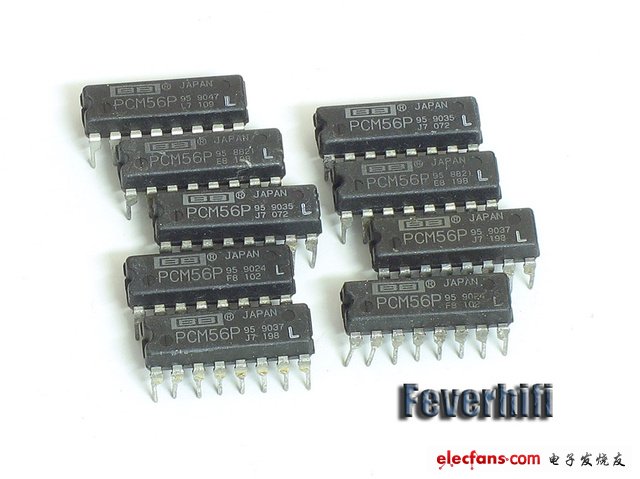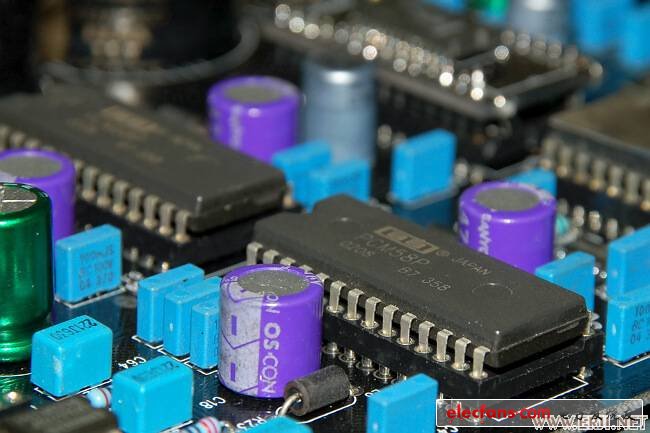When you go to the flea market to buy a CD, the js will talk to you about the CD using the xx decoder chip, so the value is xx yuan. In fact, a CD machine still has many aspects to consider, such as turntable, op amp, interface, etc. The vendors are not very knowledgeable, but it is popular to use this to bargain. However, the decoding chip is indeed the core of the CD, let us look at the mainstream chip.
The d / a digital / analog converter can be roughly divided into two main streams: one is multi-bit, and the other is unit. In terms of development time, multi-bits appeared when the CD was released, and the first-generation 1bit products only appeared on the market around the early 1990s, but the multi-bit and 1bit are structurally analyzed. Which one is better? For example, a string of beads worn with string. We use two methods to remove the beads on the string. The first method is: take it in several times and remove a fixed number of beads each time; the second method is: take as many times as there are beads. Take only one bead at a time. In fact, the first method is equivalent to the multi-bit mode. Only after receiving all 16-bit numbers, the decoding process is performed once. The second method is equivalent to the single-bit mode, one digital bit by one digital bit, continuous decoding processing. In terms of multi-bit, its advantage is that there is no so-called requantization process, so the noise is lower; in addition, it also has better dynamic performance. However, the traditional multi-bit at low level has the problems of non-linear distortion and zero cross (zero cross). If you want to overcome the need to use a very complicated circuit structure, this causes the multi-bitdac chip to pursue high-quality goals. At the same time, it also has to pay a high price. Compared with 1 bitdac, its advantage is that there is no inherent problem of zero-crossing distortion. The linearity of the analog waveform is good, and then the production cost is low. This is why the low and medium-priced cd players on the market use 1 bitdac in large quantities. . However, 1 bit dac requires a higher frequency clock, and it will cause some information to be lost during the "requantization" process, which is also the hi-end
Common DAC chips are mainly divided into multi-BIT (MULTI BIT) and 1BIT camps. The main manufacturers of multi-BIT in the past were BB, ADI, PHILIPS. SANYO, but now PHILIPS and ADI have also turned to 1BIT, and SANYO hasn't seen anything good, only BB company is supporting.
1) The common DAC chip of BB company is:
16BIT PCM56 is mainly used in most affordable CD players,

18BIT's PCM58, which was used a lot on mid-range CDs before, has good performance and more attractive sound. 20BIT's PCM63, which should be BB's most classic DAC chip, has excellent performance indicators and good listening. sense. It has always been seen on many previous high-end machines. Unfortunately, it was later discontinued.

20BIT PCM1702, this is a product used by BB company to replace PCM63. It has better performance indicators than PCM63, but for some reason, many people would rather like the sound of PCM63 than accept the sound of PCM1702. Personally, it is estimated that PCM63 is easier to get thicker and warmer sound than PCM1702.
24BIT's PCM1704 and PCM1702's upgraded products also use the same internal structure of PCM1702, with higher resolution and dynamic, and naturally become the mainstream DA chip of high-end models.
PCM1702 and PCM63 and PCM1704 all use BB's unique COLINEAR structure. It uses two 19-bit DACs in each channel to be responsible for the positive and negative half-cycle signals, and then the current output part of the DAC is combined into two. This structure not only has the high dynamic characteristics of multi-bit DAC, but also successfully solves the problem of zero-crossing distortion that occurs in general multi-bit DAC, so that the linearity of the output is improved.
There is also PCM67 of BB's hybrid design. This is an 18BIT chip with two channels. After the 18BIT signal is input, it immediately divides the 18BIT signal into 10BIT and 8BIT. Among them, the higher 10 BITs are converted by multi-bit DAC, the lower 8BIT is converted by 1BIT, and finally the two parts The output of the analog signals is added. This design uses 1BIT to solve the problem of zero-crossing distortion, and can retain the high dynamic advantages of multiple Bits. The design concept is extremely clever.
Most of BB's DAC chips are usually divided into three levels, namely: standard P suffix, higher-level PJ suffix, high-level PK suffix, the internal structure is exactly the same, slightly different in performance.
YUEQING WEIMAI ELECTRONICS CO.,LTD , https://www.weimaicarconn.com